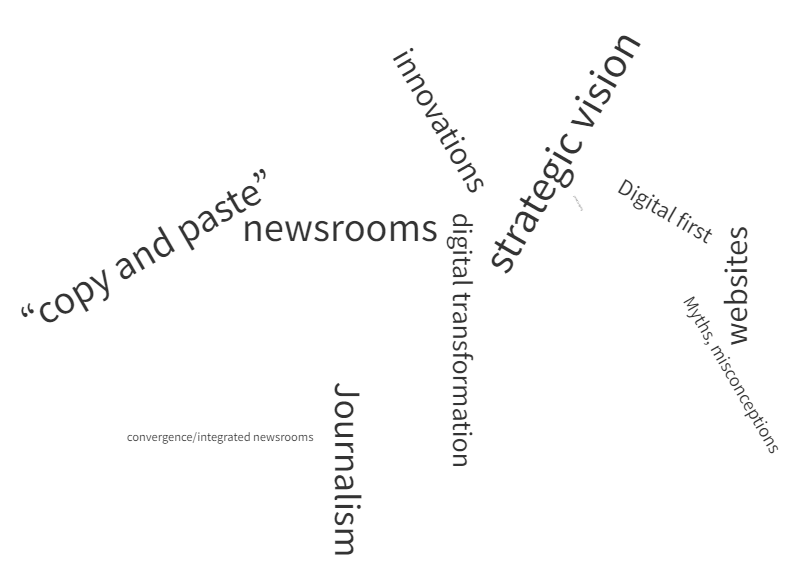
It is evident that publishers in Zimbabwe are struggling to adjust to the digital era. By its very nature, the media business is complex because the product is fluid, and you can’t really apply strategies that are used in FMCGs for example. Digital first, digital transformation and innovations have become overused clichés that have lost meaning.
There is a general misconception amongst media executives and even journalists on the value of digital both as a department and strategy.
There are those that reduce it to “copy and paste” business, some feel it's about securing more followers on social media and most times it’s relegated to the back burner. Unknown to them, digital is the newsroom, digital is strategy and digital is the hub of the publishing business. Journalism is the currency for publishers, and any strategy that does not put that at the centre is bound to fail.
One common feature among all media houses that have successfully implemented digital transformation is that they adopted a model that changes editorial operations, or their story telling style have changed, making it appeal more to audiences who they would have segmented.
For instance, the Financial Times exerts focus on securing the future of high quality, trusted and independent news while the 2014 leaked New York Times innovation report makes it clear that they were winning on journalism and that their core mission remains one, to produce the world's best journalism. This means it is critical for publishers to make it a mission that audiences spend more time reading more of their journalism.
Ideas on digital transformation need to fit into editorial operations and other interventions should come as support pillars, and ultimately revenues will follow. Everything begins with strengthening newsrooms; creating and adopting strategies and working models that accelerate thinking and innovation to be located at the epicentre.
This will lead to massive audience growth. While all this is taking shape, other business units like commercial and distribution as well as IT should join the party, making it easy to provide better reader experience.
Digital denial
- Mavhunga puts DeMbare into Chibuku quarterfinals
- Bulls to charge into Zimbabwe gold stocks
- Ndiraya concerned as goals dry up
- Letters: How solar power is transforming African farms
Keep Reading
Absence of a strategic vision, journalism resources and zero buy-in from editors and executives, coupled with classic saboteurs who lobby against those who want change to happen; impeding new activities, ideas and workflows create a breeding ground for burying digital transformation.
This can be elevated to humiliating colleagues in meetings, and blatant show of passive aggression targeted at change champions, invalidating their opinions and knowledge. But this can only be solved if media executives know and believe in the expertise they have hired and defend transformation champions.
Myths, misconceptions and knowledge charlatans
Many think that when people say “print is dying", it means abandoning the printing press and doing away with hard copies, whereas signs of death are in plummeting circulation figures and advertising revenues. Of course, there are many reasons for this, including a difficult economic environment, but on top of these are audience preferences that have changed and shifted. It’s a pity that in Zimbabwe data on circulation figures is kept a secret as opposed to other markets where the data is used as part of research and is readily available. For instance, available data shows that once called “world's greatest newspaper”, the Tribune's weekday circulation fell from 448 000 to 118 000 in just seven years. There is a general myth that availability of content on websites results in people not buying hard copies of newspapers in the streets.
It’s not true. Another myth is that content scrappers make more money from content from established publishers and, therefore, we should compete with them, again this has not been proven.
Another myth is that convergence/integrated newsrooms do not work, but it's just fear in newsrooms where editors protect their turfs and work to outshine each other. A clearly defined digital first converged/integrated newsroom is the answer to this. It allows close co-operation on technological development, sales and marketing and business development, ensuring revenue and innovation opportunities are maximised for the benefit of audiences and brands.
Dearth in paradigmatic innovation
Change is difficult and unfortunately not many journalists and media executives commit to search for new knowledge and skills. Many marvel in yesteryear glory of big stories they did, but a lot has changed.
There is empirical research using market data and tested models. When there is no mind-set shift, investment in technology suitable for publishers will never be possible.
Digital transformation requires constant training and even hiring of digital talent, but this won't be possible unless minds and thinking changes. Interestingly, media executives will be aware of digital needs but will not acknowledge its importance as they will be divided between a dying print that is still bringing significant revenues.
- Silence Mugadzaweta is digital & online editor for Alpha Media Holdings and content strategies blogger for International News Media Association.











